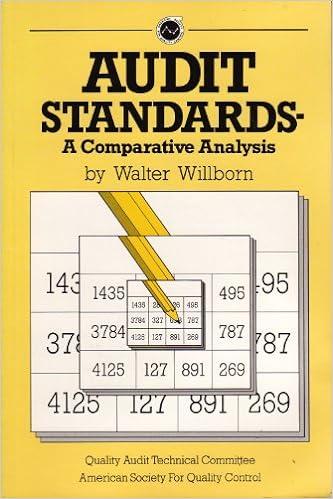1) Develop and activity-based cost system for Dakota Office Products (DOP) based on the year 2000 data. Calculate the activity cost-driver rate for each DOP activity in 2000.
2) Using your answer to Question 1, calculate the profitability of Customer A and Customer B.
3) Assume that Dakota applies the analysis done in Question 2 to its entire customer base. How could such information help Dakota managers increase company profits?
4) Suppose that a major customer switched from placing all its orders manually to placing all its orders over the internet site. How should this affect the activity cost driver rates calculated in Question 1? How would the switch affect Dakotas profitability?
Data is as follows:



Exhibit 1 Dakota Office Products: Income Statement CY2000 Sales Cost of Items Purchased Gross margin Warehouse Personnel Expense Warehouse Expenses (excluding personnel) Freight Delivery Truck Expenses Order entry expenses General and selling expenses Interest expense Net Income Before Taxes 42,500,000 35,000,000 7,500,000 2,400,000 2.000.000 450,000 200,000 800.000 2,000,000 120.000 (470,000) 121.4% 100.0% 21.4% 6.9% 5.7% 1.3% 0.6% 2.3% 5.7% 0.3% -1.3% Exhibit 2 Customer Profitability Report (Current Method) Sales Cost of Items Purchased Customer A 103,000 85,000 121.2% 100.0% Customer B 104,000 85,000 122.4% 100.0% Gross margin Warehousing, Distribution and Order Entry 18.000 12,750 21.2% 15.0% 19,000 12,750 22.4% 15.0% 5,250 Contribution to general and selling expenses, and profit 6.2% 6,250 7.4% Exhibit 3 Services Provided in Year 2000 to Customers A and B Customer A 200 200 Customer B 200 150 Number of cartons ordered Number of cartons shipped commercial freight Number of desktop deliveries Number of orders, manual Number of line items, manual Number of EDI orders Average accounts receivable 6 60 25 100 180 6 $9,000 $30,000 Exhibit 1 Dakota Office Products: Income Statement CY2000 Sales Cost of Items Purchased Gross margin Warehouse Personnel Expense Warehouse Expenses (excluding personnel) Freight Delivery Truck Expenses Order entry expenses General and selling expenses Interest expense Net Income Before Taxes 42,500,000 35,000,000 7,500,000 2,400,000 2.000.000 450,000 200,000 800.000 2,000,000 120.000 (470,000) 121.4% 100.0% 21.4% 6.9% 5.7% 1.3% 0.6% 2.3% 5.7% 0.3% -1.3% Exhibit 2 Customer Profitability Report (Current Method) Sales Cost of Items Purchased Customer A 103,000 85,000 121.2% 100.0% Customer B 104,000 85,000 122.4% 100.0% Gross margin Warehousing, Distribution and Order Entry 18.000 12,750 21.2% 15.0% 19,000 12,750 22.4% 15.0% 5,250 Contribution to general and selling expenses, and profit 6.2% 6,250 7.4% Exhibit 3 Services Provided in Year 2000 to Customers A and B Customer A 200 200 Customer B 200 150 Number of cartons ordered Number of cartons shipped commercial freight Number of desktop deliveries Number of orders, manual Number of line items, manual Number of EDI orders Average accounts receivable 6 60 25 100 180 6 $9,000 $30,000









